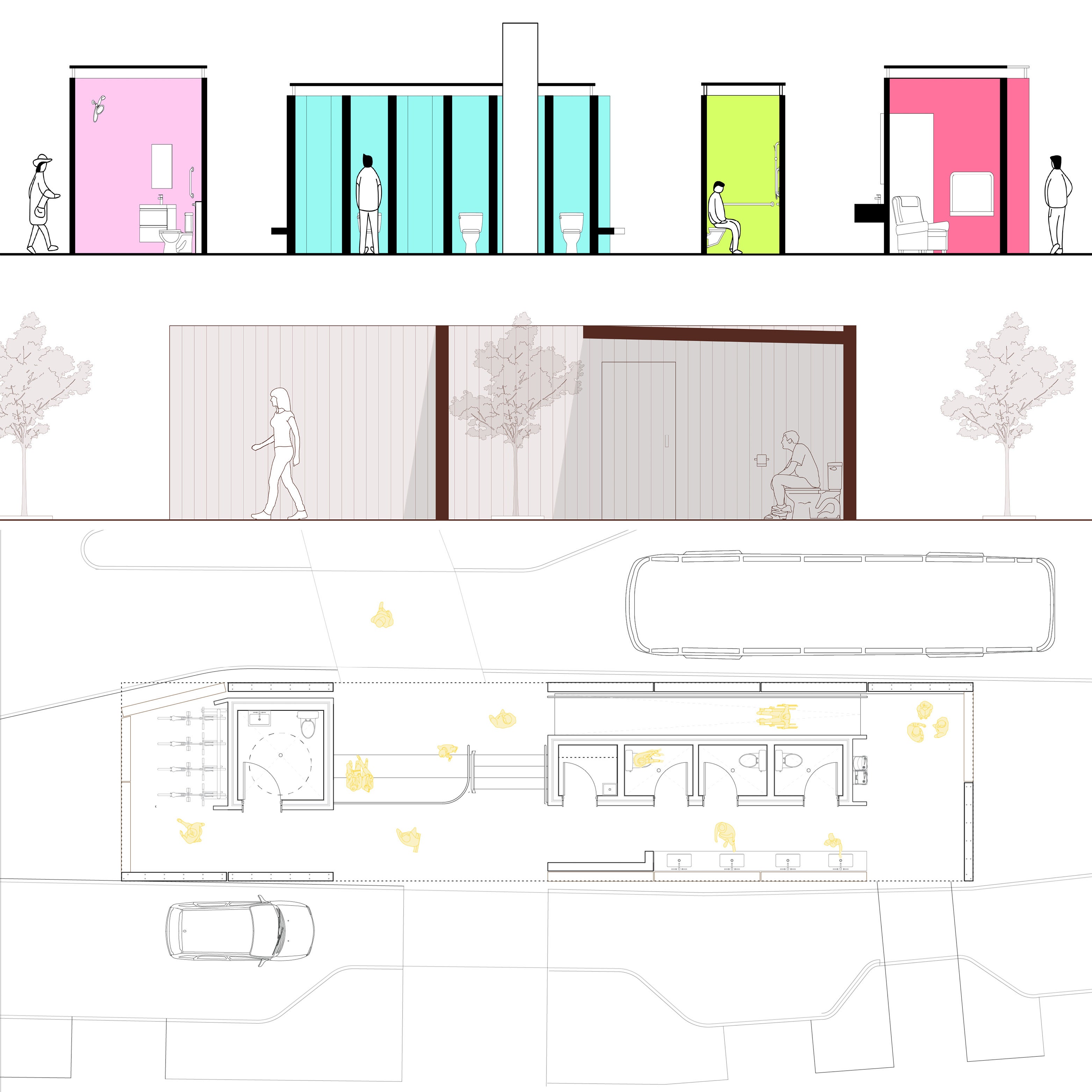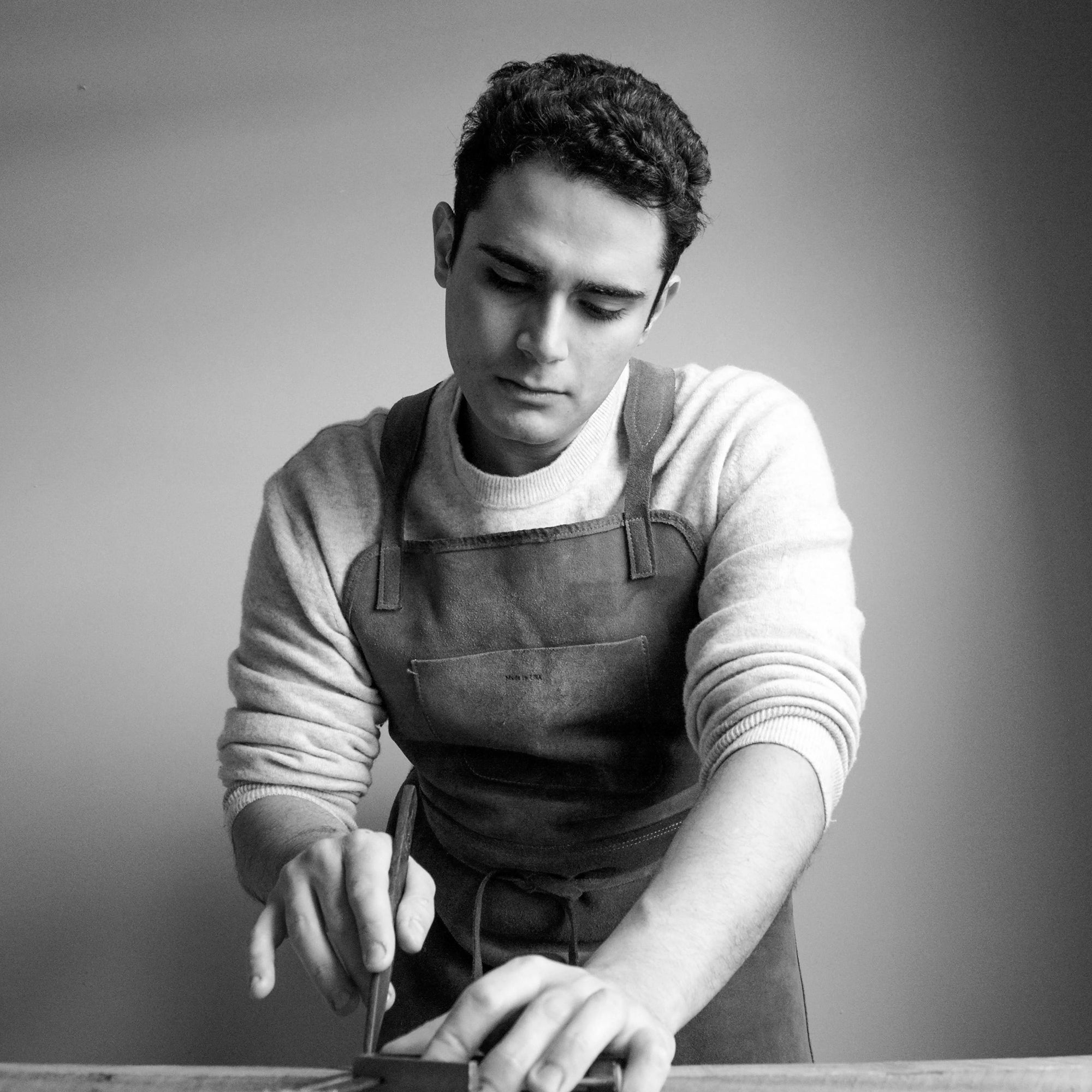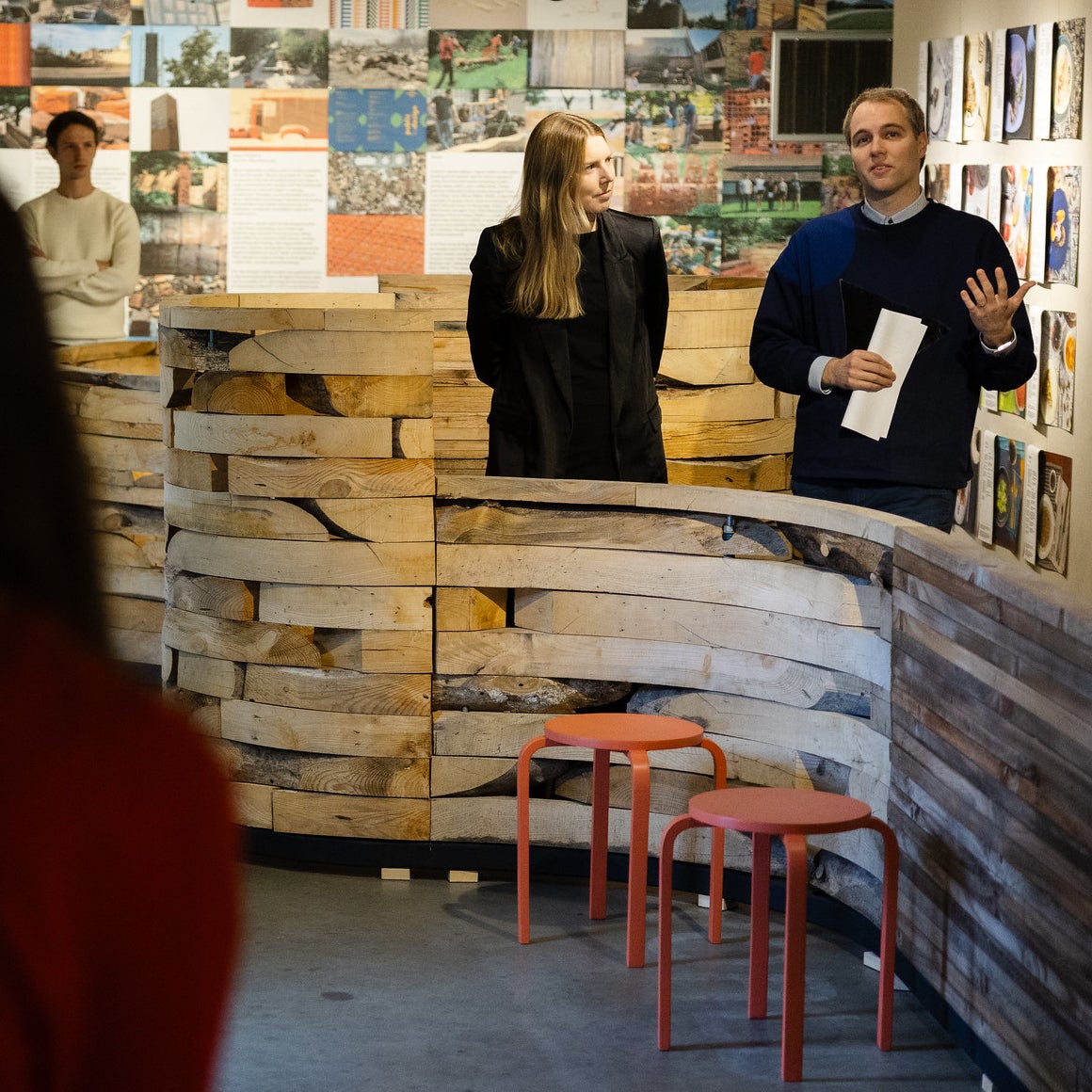
Climate Futures Design Research Challenge Winners Announced
The Center for Design at the UVA School of Architecture is excited to announce the winners of the recently launched design research challenge — Climate Futures — established to support transdisciplinary teams in the development of a year-long research project focused on climate justice.
Submitted proposals were evaluated by a panel comprised of School of Architecture faculty, students, alumni and community partners and selected based on their quality, clarity and focus on climate justice, capacity for positive short and longer-term impact, and potential for achieving additional funding to support the continuation of the project. Three projects were selected to receive $25K each and will commence research this summer.
“In the Challenge’s request for proposals, climate justice was described as the ‘acknowledgment that climate change can have differing social, economic, public health and other adverse impacts on underprivileged populations’,” said Director of the Center for Design and Associate Professor Anselmo Canfora. “I am very enthusiastic about the depth and range of each of the design research projects selected in the inaugural year of our Climate Futures Challenge. The three transdisciplinary design research teams not only build on their extensive ongoing research partnerships across Grounds and beyond but have also helped launch a very impressive array of investigations by amalgamating their different disciplines, diverse values, knowledge, know-how and expertise.”

The three selected projects are —
APERIODIC TABLE OF THE ANTHROPOCENE:
Towards climate justice for communities, places, and materials of the green energy transition
Project Team:
Berenika Boberska, Artist/Architect and Mitchell Visiting Professor, School of the Art Institute of Chicago; Principal, Feral Office
Ash Duhrkoop, PhD Candidate in Art History, Art Department, Graduate School of Arts and Sciences, UVA
Dr. Cassandra Fraser, Professor of Chemistry, Biomedical Engineering Department, School of Engineering and affiliated faculty, School of Architecture, UVA; co-PI
Hugo Kamya, Professor, School of Social Work, Simmons University
Julia MacNelly, MLA Student, School of Architecture, UVA
Matthew Seibert, Assistant Professor of Landscape Architecture, School of Architecture, UVA; co-PI
Theodore Teichman, MLA ’23 Alumnus, School of Architecture, UVA
Devin Zuckerman, PhD Candidate, Department of Religious Studies, Graduate School of Arts and Sciences, UVA

Project Summary:
If the time-honored periodic table hanging in science classrooms around the world enables prediction of properties and relationships between material elements, how might a new aperiodic table, updated and born from the history-defying conditions of the Anthropocene, assist a global community struggling to navigate the material, ecological, and social justice issues of an accelerating climate crisis?
Climate adaptation has a material blindness. This is evident in climate retrofits of homes which focus on preventing energy loss through sealing windows, when the industrial materials used in making many homes in marginalized communities contain toxic chemicals. Lacking sight of these material stories, such climate retrofits harm the health and wellbeing of historically marginalized communities with barriers to recourse. Examples such as these echo across the scales of climate action and response. This proposal asserts that a just climate adaptation requires us to re-consider the materials that will (intentionally or unintentionally) be part of our climate future. By taking a material pathways approach — from extraction to waste — multiple points and scales of intervention can be revealed.
This project supports a discreet project housed within UVA’s tranSci Lab for Real World Chemistry and Creative Communication that traces the entangled material worlds enlisted by the green energy transition. Through this collaborative research and design project called the Aperiodic Table of the Anthropocene diverse forms of knowledge about the material world are documented and organized. The Aperiodic Table is a physical and digital device serving as a conceptual framework to represent and re-narrate Green Energy Materials (GEMs) through the people, places, and ecologies they engage. The research team will document these material narratives as “entries” in the Aperiodic Table through first-hand field work, solicited contributions, and collaborative pedagogies. The initial scope of inquiry will focus on copper as a proof of concept for the project framework.
The project seeks to bring attention to hidden or rarely seen trajectories of the materials implicated in the Green Energy Transition (from extraction, to production, and waste) and render pathways forward that promote environmental health and justice. The Climate Futures Research Design grant will support place-based research activities, conceptualization and realization of the Aperiodic Table of the Anthropocene, curriculum design and support, and an associated lab opening exhibition.
Panelists’ reflections (excerpts):
“I think it's a bold idea, and funding it would set a framework for continued development through student work, art installations, and other funding streams.”
“Overall, I very much appreciate the goal of studying the lifespan of materials, and [examining how and] where process becomes detrimental to the environment.”
“This proposal clearly draws on the existing research strengths/experiences of a well-seasoned team who are accustomed to transdisciplinary project coordination and execution.”
____________________
DESIGN | BUILD | REFLECT
Project Team:
Eric Bredder, PhD Student (STEM Education), School of Education and Human Development, UVA
Paul Chirico, Teacher, Fluvanna County High School
Wade Cotton, Owner, Timber Made Company
Allyson Gibson, MLA Student, School of Architecture, UVA; ISA-certified Arborist
Joe Lehnan, Forest Utilization and Lead Marketing Specialist, Virginia Department of Forestry
Andrew Spears, FabLab Technician, School of Architecture, UVA; Co-founder, UVA Sawmilling; PI
Tim Victorio, Lecturer, School of Architecture, UVA

Project Summary:
Design | Build | Reflect builds on UVA Sawmilling’s mission to provide research and applied design experiences to students that generate immediate community engagement and positive environmental impacts through the processing of urban trees. It incorporates a long-term visioning of climate, as tree canopy shifts through die-off and species migrations, and addresses questions of justice — who has access to healthy urban canopy and what does this imply about how citizens are equitably exposed and educated to sustainable and healthy environments?
This research proposal seeks to develop a holistic approach to sustainability, fabrication, design, urban forestry, and community outreach through a two-semester course seeking student perspectives from schools of Architecture, Engineering, Environmental Sciences, Education, and others to form an interdisciplinary team. Given the complexity of the problem of climate justice, meaningful conversations and experiences surrounding solutions inherently necessitate collaboration across disciplines (Roser, et al., 2015). The structure of the course seeks to spark this dialogue through hands-on experience, data analytics, empirical analysis and material research design with built-in reflective practices.
This course builds upon previous work by UVA Sawmilling — the solar kiln they have run since 2020, and one recently built at the Community Lab School with local high school students. This passive structure is a necessary component of the material pathway of lumber production at UVA. The research team, with students, will develop design modifications and improvements to the standard kiln designs used within the solar drying industry while working collaboratively with local professionals, arborists, and sawyers. Students will be empowered to build a solar kiln through fabrication workshops and be introduced to safe practices in woodshops, proper handling of woodworking tools, and traditional techniques of successful wood construction. Congruently, students will collect and analyze data on the performance of the kiln, and critically reflect on its design, especially in terms of long-term energy and material performance.
The project seeks to provide students with hands-on, research-backed educational experience working alongside a diverse team of local professionals, University faculty, students, staff, and peers to develop safe and practical skills in construction, interpersonal teamwork, and data collection and analysis to promote research pathways. The team also aims to create a network of local solar kilns, working with Albemarle County schools, to build community-based access to lumber where UVA students work together with K-12 public institutions. The Climate Futures Research Design grant will support the two-semester course, a publication, demonstrations and an exhibition that expands the research outcomes to the Charlottesville community, reaching K-12 students that share a passion for sustainable practices.
Panelists’ reflections (excerpts):
“I appreciate the multi-faceted impact of this proposal, from UVA students to the greater Charlottesville community, and beyond. Through the development of a two-semester course that introduces students to an iterative method of working and thinking in our changing climate, I believe that this project has potential for impact beyond its one-year scope by cultivating the next generation of climate justice scholars and advocates across many disciplines.”
“The educational component of this proposal is well thought out in terms of …introduc[ing]… students [to] thinking about the relationship between fabrication and climate justice issues.”
“This proposal is clear and tangible in its goals, and I appreciate the manageable scope and the fact that it will benefit students through hands-on experience.”
____________________
Mindful Materiality
Project Team:
Taleen Astrid Josefsson, NCARB CPHC BREEAM AP, Principal, TAJ Architecture Studio PLLC
Katie MacDonald, Assistant Professor of Architecture, School of Architecture, UVA; PI
Dr. Kevin A. Pelphrey, Harrison-Wood Jefferson Scholars Foundation Professor of Neurology, School of Medicine, UVA; UVA Brain Institute; co-PI
Jenny Roe, Ph.D., Mary Irene DeShong Professor of Design and Health, School of Architecture, UVA; co-PI
Kyle Schumann, Assistant Professor of Architecture, School of Architecture, UVA; co-PI
Cat Thrasher, PhD Student in Developmental Neuroscience, Department of Psychology, Graduate School of Arts and Sciences, UVA; co-PI
Tyrone Yang, AIA, Ph.D, WELL AP, FitWel Ambassador, Healthy + Sustainable Building Design Consultant, Entegra +Architectural Health

Project Summary:
Mindful Materiality posits that the multi-sensorial experience offered by interacting with biomaterials (wood, bamboo, plant fibers, etc.) in architectural applications will increase human connection to nature, in turn supporting mental health and pro-environmental behaviors which play an important role in supporting planetary health and climate security. It asks: How does human interaction with biomaterials in architecture emotionally regulate at a neural and physiological level?
In thinking about how to address climate challenges, many people overlook the relevance of psychology. People’s behaviors, their well-being and their interactions in the world, are critical to planetary health (Clayton and Brook 2005). Contact with nature is also linked to a host of positive cognitive, emotional, physiological and neurological health outcomes (Roe & McCay 2021). These benefits (e.g. of emotional regulation) directly mediate the relationship to and connection with nature. Direct contact with natural materials in interior settings—like wood— can also reduce stress and improve mental health outcomes (Higuera-Trujillo et al, 2021). But access to nature and natural materials—and direct contact with it—is not a level playing field, resulting in inequities in the experience of nature and in the human benefits derived.
This research will study the interrelationships between humans and nature by measuring the impact of unique natural material structures on neurological, cognitive, and emotional health. This collaboration brings together architectural design and materials research (MacDonald, Schumann) with the disciplines of architectural psychology (Roe) and neuroscience (Thrasher, Pelphrey) to explore the relationships between biomaterials in architecture, brain functioning, and human behavior. The project team will design and construct a series of inhabitable architectural prototypes to test the impact of novel biomaterials on human and brain health. These prototypes will consist of a spectrum of material approaches to understand the impacts of biomaterials as compared to normative construction materials.
The project will pair experimental design with neural and mental health impact assessment methods to gain a better understanding of the role of biomaterial architecture in sustaining the human experience of nature. The Climate Futures Research Design grant will support the design and installation of an experimental biomaterial interior space and the testing of new scientific protocol to measure its multisensorial impact.
Panelists’ reflections (excerpts):
“I am impressed by the level of rigor and thought given to the experimental design. I believe this rigor in data collection will help the team achieve [additional] funding in the future…”
“The collaboration between psychologists, neuroscientists, and designers is an interesting and novel take on climate justice research and has the potential to meaningfully contribute to the field both in the 1-year scope and in future applications of this work.”
“I think this is a fascinating field and area of study…[and] can see how it may lead to….unlocking change in the climate space.”
____________________
“These investigations range from the scale of renewable biomaterials and their impact on the behavior and wellbeing of people; to the community-led development, construction, and monitoring of prototypical solar kilns as a part of sustainable practices of forested lumber; and to raising awareness of the impact of toxic materials and their industrial lifecycles from extraction to production and waste,” said Canfora. “Across these significant areas of research, I’m especially excited about the learning experiences we will all have during this forthcoming year of work together, and the outcomes each will share with the A-School community and beyond.”
Climate Futures Design Research Challenge Review Panel:
Michelle Amt, AIA, LEED AP BD+C, WELL AP, Director of Sustainability and Inclusion, Associate Principal, VMDO
Janet Bloomberg, FAIA, Partner and Founder, KUBE Architecture
CL Bohannon, Ph.D, Associate Dean of Justice, Equity, Diversity, and Inclusion; Associate Professor of Landscape Architecture, UVA
Lauren McQuistion, Ph.D in the Constructed Environment Candidate, UVA
Andrew Mondschein, Ph.D, Associate Dean of Research; Associate Professor of Urban and Environmental Planning, UVA
Brianne Nueslein, Graduate Student, MLA and MArch, UVA
George Srour, Co-founder and Chief Dreamer, Building Tomorrow
Randall Winston, JD, Deputy Mayor of Infrastructure, Office of Los Angeles Mayor
A special thanks to the review panel for their time and efforts in evaluating proposals, and to Dean Malo A. Hutson and the Class of 1972 for their generous contributions to helping seed fund this inaugural Design Research Challenge and the Center for Design.


